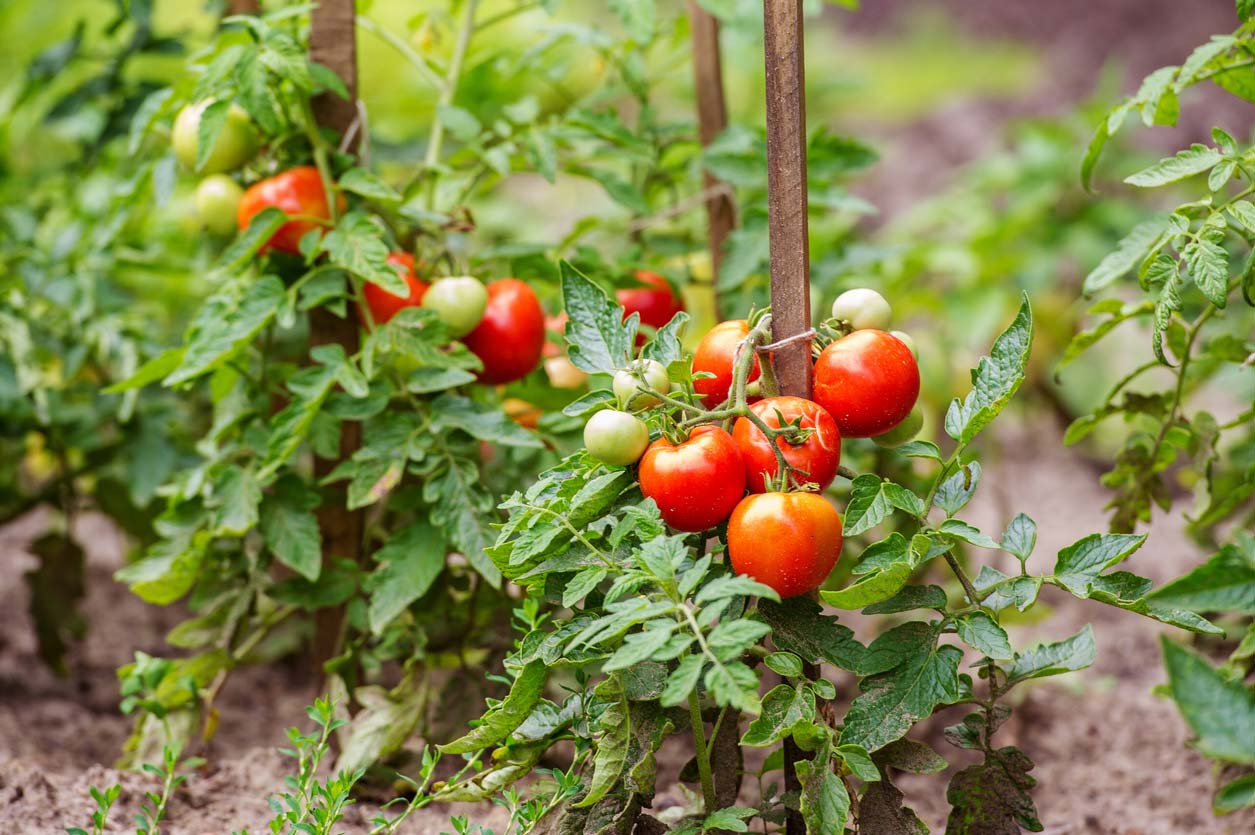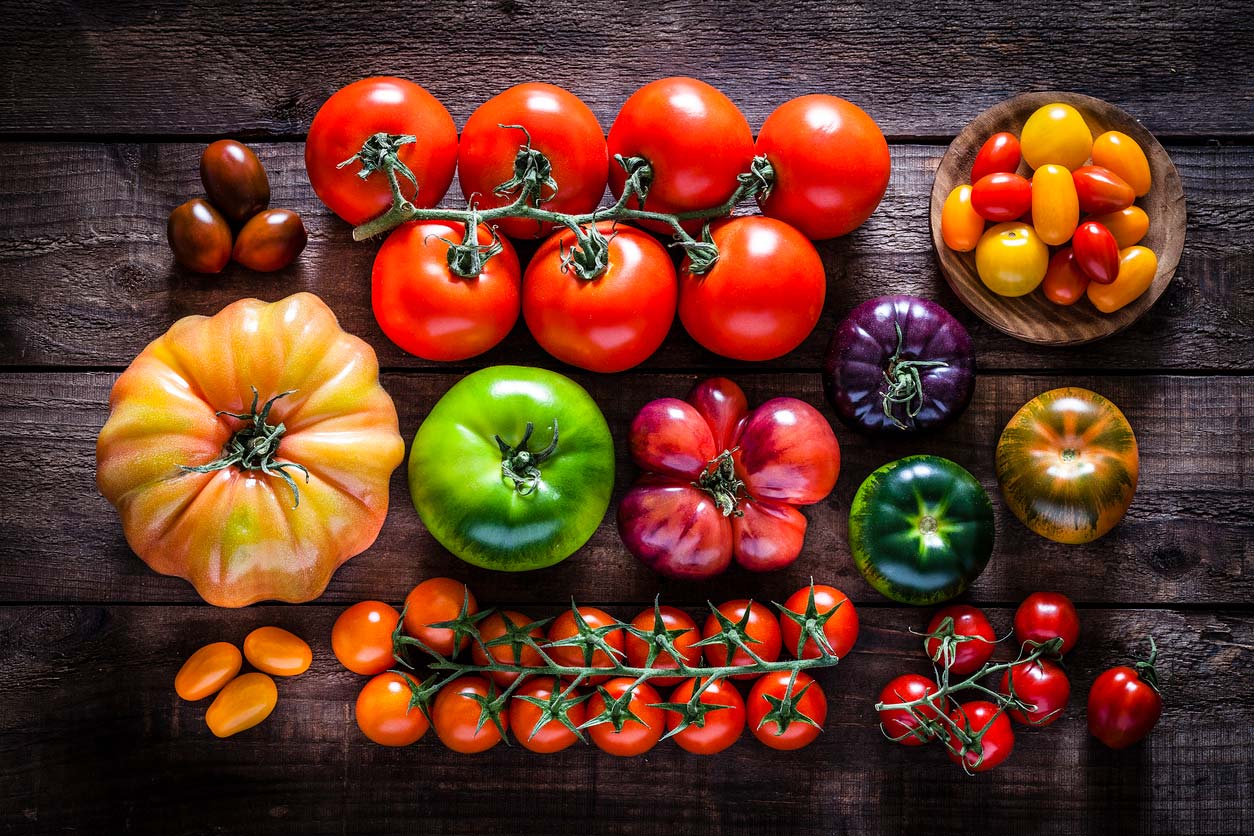Tomatoes are popular today, but that wasn’t always the case. Until the mid-1800s, people in the United States and Europe avoided and even feared them. Tomatoes are a member of the nightshade family of plants, which many Europeans historically considered to be toxic. (To be fair, eating the leaves and berries of one of the members of this family, Belladonna, will give you hallucinations and delirium if they don’t kill you first.)
Add the strong aroma of the tomato plant itself, and the scandalously red skin and juices, and those not familiar with the tomato’s culinary upsides might be forgiven for thinking that it was not fit for human consumption.
Early tomato marketing in the US didn’t help. A gardener from Massachusetts described them as “disgusting” sometime in the 1820s. Another chronicler of public opinion estimated that no more than 2% of the population would try that “sour trash” a second time following initial exposure.
It wasn’t just that tomato was an acquired taste that the populace hadn’t acquired. There was downright terror of tomatoes through the middle of the 19th century.
One myth, widely believed in Europe, was that the mere touch of the green tomato worm could result in death. Another myth attributed the deaths of wealthy nobility to their love of tomatoes, known as “poison apples” (actually, the tomato may have played a role in their deaths, as its high acidic content released the lead in their fancy pewter plates and caused lead poisoning. But I doubt a jury of tomato’s peers would convict it of murder given such extenuating circumstances).
Even though these bad raps were inspired by misinformation, that fear around tomatoes and other nightshade plants persisted for a long time, and in fact, still pops up on some alternative nutrition blogs.
Nonetheless, tomatoes are the second most widely eaten vegetable in the United States today, losing the crown only to potatoes. However, the National Health and Nutrition Examination Survey, What We Eat in America (2005–2010), found that most tomatoes were consumed as tomato products — namely, tomato sauce or ketchup.
So what’s the truth about tomatoes? Should we be consuming them in such great quantities? Or instead, are they toxic, sour trash that carries deathly worms? Or is the truth more nuanced? Let’s find out.
Where Did Tomatoes Originate?

Tomatoes originated in South and Central America. All the tomatoes we eat today are derived from Solanum pimpinellifolium — nicknamed “pimp” at a time when the word didn’t conjure images of jewel-handed canes and giant sunglasses — a tiny, wild tomato no bigger than a pea. The pimp still grows wild in northern Peru and southern Ecuador.
Tomatoes spread globally as seeds were taken from Mexico and South America to Spain and across Europe. The tomatoes grown today, in the United States and elsewhere, are descendants of those European strains.
Are Tomatoes a Fruit or Vegetable?
While most of the more outlandish myths around tomatoes have been cleared up by now, there’s one argument that still remains. Are tomatoes considered a fruit or a vegetable?
Often, they’re referred to as both. But technically (or botanically), they’re fruits. Tomatoes are ripened flower ovaries and contain seeds, which are characteristics of a fruit. If you’ve ever seen a tomato grow, it emerges from the same spots where the plant’s flowers have bloomed.
I’m not sure why this debate is limited to tomatoes, by the way. Here’s a very non-comprehensive list of vegetables that are, botanically speaking, also fruits: bell peppers, squash, cucumbers, pumpkins, olives, avocados, and okra.
But to many nutritionists, and in the culinary world, all of the above are treated as vegetables. Tomatoes don’t offer the same sweet flavor as most fruits. Their lack of natural sugar content compared to other “fruit” puts them typically in savory dishes and not desserts. I mean, have you ever had a tomato pie as a sweet treat? I didn’t think so. After all, as journalist Miles Kington is quoted as saying, “Knowledge is knowing that a tomato is a fruit. Wisdom is not putting it in a fruit salad.”
So for now, perhaps we can continue to consider tomatoes to be both a fruit and a vegetable, given the characteristics that allow them to fit into both categories.
Types of Tomatoes

If you look around your local supermarket, it may appear that there are essentially two types of tomatoes, big ones and small ones. But the truth is that in most retail stores, there are at least 10 fresh tomato varieties, ranging from cherry to vine-ripened. And when it comes to the varieties available for your home garden, there are over 400 to choose from.
All modern domestic tomatoes (known botanically as Solanum lycopersicum, which by the way means “nightshade wolf peach” for no reason that I could figure out from an exhaustive 3-minute Google search) are remarkably similar, genetically. Taken together, they possess no more than 5% of the total genetic variation present within the wild species and primitive varieties.
Some of the types most commonly seen in grocery stores include:
- Grape Tomatoes
- Beefsteak Tomatoes (Green or Red)
- Cherry Tomatoes
- Cocktail Tomatoes
- Roma Tomatoes
- Heirloom Tomatoes
- Tomatoes on the Vine
Typically, tomatoes are green when unripe and become red as they ripen. But they also come in many different colors outside of what you’ll find in the grocery store. At some farmers markets, CSAs, or if growing your own tomatoes, you may come across yellow, orange, pink, green, burgundy, purple, streaked and striped, and brown or practically black tomatoes.
And if you’re growing them at home, no matter what their color, tomatoes all have the same needs — full sun, fertile soil, and water.
Tomato Nutrition

Regardless of the variety you choose, tomatoes are full of healthy nutrients. They’re a great source of potassium and vitamin C, are low in fat, and are a hydrating food due to their high moisture content.
Tomatoes are also packed with health-promoting antioxidants and phytochemicals, including several beneficial carotenoids, such as lutein, zeaxanthin, and lycopene.
Lycopene
Lycopene may be the most famous antioxidant in tomatoes, but it appears in other red plant foods as well. Tomatoes are one of the best sources of lycopene, which helps reduce inflammation and is beneficial for conditions related to oxidative stress. Lycopene also appears to have strong anti-cancer properties, particularly in studies with men and prostate cancer.
How much lycopene you can find in any given tomato is anyone’s guess, however, in one study, the amount of lycopene was reported to range from 2.5 to 200 mg/100 g in raw tomatoes — a factor of 80. The level of lycopene is directly related to ripeness and increased pH (that is, lower acidity), so the better tasting the fruit (OK, vegetable), the better it probably is for you.
Eat tomatoes with some healthy fat to enhance your absorption of lycopene. Lycopene is a carotenoid, a fat-soluble compound. As such, eating it alongside some fat can help boost its bioavailability for your body. Cultures that serve tomatoes with olive oil or avocado seem to have known this instinctively.
Studies tell us that heating tomatoes can increase the amount of lycopene that the body will absorb, by breaking down plant cells that trap the lycopene (puréeing has this effect as well). According to one study in the Journal of Food Science, the best ways to cook tomatoes and retain as much lycopene as possible are either by using the microwave or the stovetop.

5 Health Benefits of Tomatoes

The health benefits of tomatoes are best seen in their whole food form. In other words, when all their natural nutrients are intact and there’s been no high fructose corn syrup, excess sodium, or other unwanted ingredients added to them.
In their most natural form, tomatoes may offer the following benefits to your health.
1. Tomatoes and Cancer
We already established that tomatoes are chock full of antioxidants. But did you know the antioxidants in tomatoes can help protect your cells from oxidative damage that can lead to diseases like cancer?
The most studied anticancer compound in tomatoes has been lycopene, which, in addition to helping inhibit prostate cancer, may also help to fight gastric cancer.
A high intake of tomatoes (a little under two cups daily) is also associated with a lowered risk of death from cancer when compared to individuals who consumed the lowest amount (approximately one teaspoon daily).
2. Tomatoes and Heart Health
It’s possible that a tomato a day may help keep the heart doctor away. Research shows that the amount of lycopene circulating in your blood is inversely proportional to the incidence of heart diseases.
Tomatoes are good for heart health in that they reduce the risk for inflammatory disorders, such as atherosclerosis, the buildup of plaque in the arteries that can lead to a heart attack or stroke. Lycopene in tomatoes also modulates cholesterol, which plays a major role in protecting against atherosclerosis and heart disease.
3. Tomato Anti-aging Benefits
The antioxidants in tomatoes don’t just help protect you against chronic diseases. They may also help keep your skin looking younger by preventing photodamage. One 2019 study found that lycopene supplementation resulted in higher blood levels and may have a skin-rejuvenating effect on middle-aged people.
What’s more, another study found that green tomatoes contain a compound called tomatidine, which may improve the efficacy and strength of your cellular signaling, and even extend your lifespan.
So if you garden, and have some green tomatoes that may not survive the first frost, you can pick them early and maybe live longer!
4. Tomatoes and Eye Health
That’s right, protecting your eyes isn’t just about wearing sunglasses or getting an annual vision exam. You can protect your eyes with what you eat every day, including making tomatoes a part of your regular diet.
Tomatoes are high in vitamin C, which is a major structural component of blood vessels and tissues in your eyes. They’re also a rich source of vitamin A, which lowers your risk for age-related macular degeneration and is an essential part of rhodopsin, a light-absorbing protein in your retinal receptors.
Side note, if you’re interested in learning more about the top foods that are good for eye health, check out our article here!
5. Tomatoes and Respiratory Disorders
Lycopene appears to have a protective effect on respiratory conditions like asthma and COPD. One study even found that lycopene could suppress airway inflammation in asthma.
Other research has suggested that eating antioxidant-rich tomatoes may even help slow the decline of lung function, especially among people with a history of smoking who have since quit.
Potential Downsides to Eating Tomatoes

Despite all of their wonderful health benefits, tomatoes may also come with a few reasons for some people to avoid them.
Tomato Allergies and Reactions
While tomato allergies are rare, especially ones that can cause severe reactions, they can still happen. According to reports, some possible symptoms of a tomato allergy may include swelling and irritation of the skin, inflammation and runny nose, and abdominal pain.
Some people also experience what’s called oral allergy syndrome, which is a contact reaction to ingesting certain foods and pollen that can cause your mouth and throat to become itchy.
Others may experience latex cross-reactivity after eating tomatoes (as well as bananas, avocado, kiwi, and chestnuts), which is when your immune system overreacts to proteins that are found in natural rubber latex.
And if you ever experience symptoms ranging from a stuffy nose to migraine after eating tomatoes, you may have histamine intolerance. Tomatoes have high levels of histamine in them, which can trigger a response we think of as an allergic reaction, although this isn’t the same as having an allergy per se.
GERD and Reflux
Tomatoes are highly acidic, and, therefore, often considered a trigger food for people with gastroesophageal reflux disease (GERD) or acid reflux, in which stomach contents flow back up through the esophagus and cause irritation.
While this isn’t a given, as someone with GERD may or may not experience symptoms after eating tomatoes, it’s something to be aware of if you suffer from these types of conditions.
Lycopenemia
Lycopenemia is a harmless but striking condition in which excessive consumption of lycopene-rich foods, particularly tomatoes, causes an orange or reddish discoloration of the skin, similar to carotenemia from eating too many carrots. This discoloration occurs because lycopene, a carotenoid pigment found in tomatoes, builds up in the fatty tissues of the body when consumed in very high amounts.
While there is no officially established threshold for lycopenemia, the consumption of up to 100 mg of lycopene daily is considered safe. It would be difficult to reach that amount from fresh tomatoes alone, as the average 2–3 inch tomato contains between 0.88–7.74 mg lycopene/100 g.
However, one study that showed the lycopene content in various tomato products suggests that tomato powder and sundried tomatoes both have exceedingly high amounts of lycopene. Eating just a few sundried tomatoes daily could put you over the 100mg amount.
Luckily, lycopenemia is purely cosmetic, and resolves once tomato intake is reduced.
The Nightshade Controversy
This isn’t really a downside, but I want to shed some light on the nightshade controversy.
The bottom line is that most people don’t really have a problem with the edible members of this family of foods (such as bell peppers, eggplants, potatoes, and tomatoes). While nightshades do contain toxic compounds called alkaloids, particularly one called solanine, they’re highly unlikely to contain them in amounts that are dangerous.
In fact, most nightshades contain around 2–13 mg of solanine each, and with a potentially toxic intake of around 400 mg, you’d probably have to eat well over 30 tomatoes in a sitting to put yourself at any degree of risk. So in normal amounts as part of a balanced diet, tomatoes are not toxic.
While most healthy people probably don’t need to put much thought into avoiding tomatoes and other nightshades, a few groups may want to steer clear. People with inflammatory bowel diseases may experience intestinal permeability, which could be worsened by excessive intake of the fiber in tomatoes.
Additionally, some people with autoimmune diseases report feeling fewer symptoms when they avoid nightshades, though most of these are anecdotal and likely depend on the individual.
Tomatoes Are Healthy & Delicious

Tomatoes come in different sizes, colors, and types but they all share the same truth: they’re nutritious fruits (and vegetables, if you prefer!) that are full of antioxidants. These powerful antioxidants give them a number of important health benefits and may help to protect against chronic disease and aging.
For most people, tomatoes are healthy and are a delicious part of a whole foods diet, especially if you can get or grow them organically.
Tell us in the comments:
- Do you eat tomatoes? What’s your favorite way to prepare them?
- Have you ever tried other varieties of tomatoes that aren’t generally found in the grocery store?
Feature image: iStock.com/Magone

